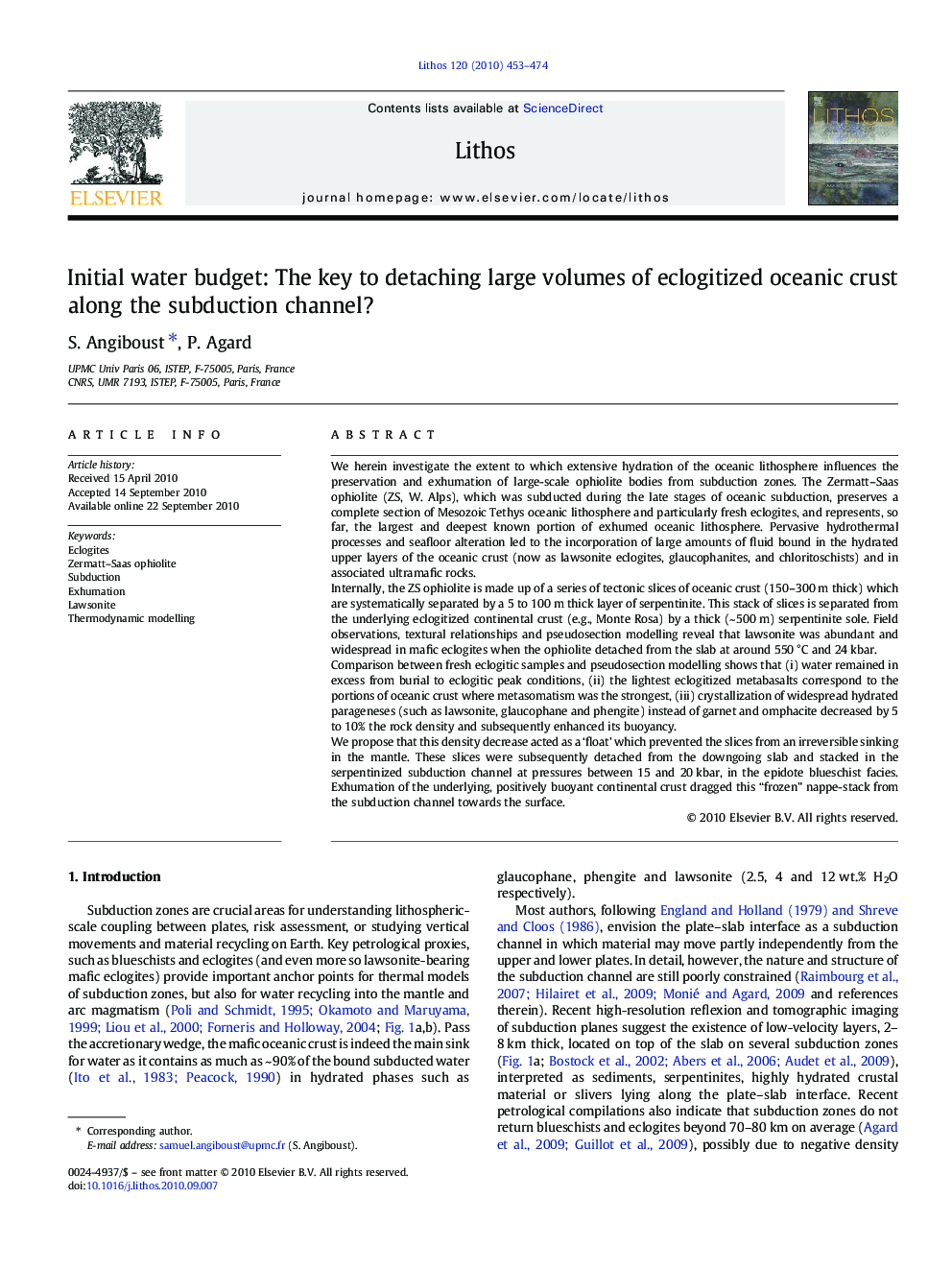| کد مقاله | کد نشریه | سال انتشار | مقاله انگلیسی | نسخه تمام متن |
|---|---|---|---|---|
| 4716858 | 1638726 | 2010 | 22 صفحه PDF | دانلود رایگان |

We herein investigate the extent to which extensive hydration of the oceanic lithosphere influences the preservation and exhumation of large-scale ophiolite bodies from subduction zones. The Zermatt–Saas ophiolite (ZS, W. Alps), which was subducted during the late stages of oceanic subduction, preserves a complete section of Mesozoic Tethys oceanic lithosphere and particularly fresh eclogites, and represents, so far, the largest and deepest known portion of exhumed oceanic lithosphere. Pervasive hydrothermal processes and seafloor alteration led to the incorporation of large amounts of fluid bound in the hydrated upper layers of the oceanic crust (now as lawsonite eclogites, glaucophanites, and chloritoschists) and in associated ultramafic rocks.Internally, the ZS ophiolite is made up of a series of tectonic slices of oceanic crust (150–300 m thick) which are systematically separated by a 5 to 100 m thick layer of serpentinite. This stack of slices is separated from the underlying eclogitized continental crust (e.g., Monte Rosa) by a thick (~ 500 m) serpentinite sole. Field observations, textural relationships and pseudosection modelling reveal that lawsonite was abundant and widespread in mafic eclogites when the ophiolite detached from the slab at around 550 °C and 24 kbar.Comparison between fresh eclogitic samples and pseudosection modelling shows that (i) water remained in excess from burial to eclogitic peak conditions, (ii) the lightest eclogitized metabasalts correspond to the portions of oceanic crust where metasomatism was the strongest, (iii) crystallization of widespread hydrated parageneses (such as lawsonite, glaucophane and phengite) instead of garnet and omphacite decreased by 5 to 10% the rock density and subsequently enhanced its buoyancy.We propose that this density decrease acted as a ‘float’ which prevented the slices from an irreversible sinking in the mantle. These slices were subsequently detached from the downgoing slab and stacked in the serpentinized subduction channel at pressures between 15 and 20 kbar, in the epidote blueschist facies. Exhumation of the underlying, positively buoyant continental crust dragged this “frozen” nappe-stack from the subduction channel towards the surface.
Research Highlights
► The ZS ophiolite is a stack of highly hydrothermalized mafic tectonic slices.
► High initial water content caused density decrease after eclogitization.
► Enhanced buoyancy and detachment of the ophiolite slice stack.
Journal: Lithos - Volume 120, Issues 3–4, December 2010, Pages 453–474